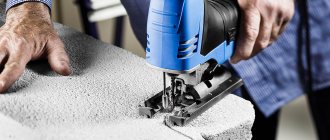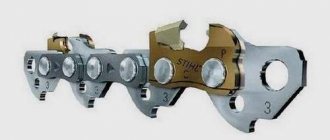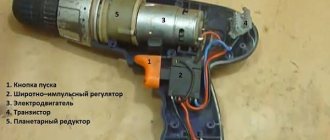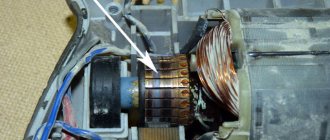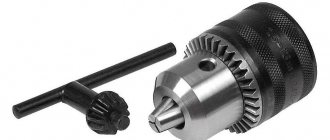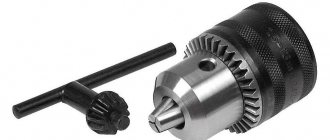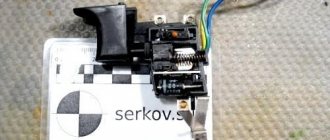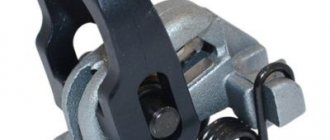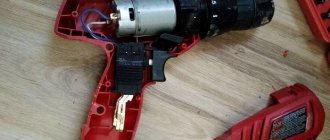Without this, the mosfet will not open and the voltage on the transformer will be zero. The second pin is connected to a separate, third connector.
If you remove the plug from the socket several times in a row, each time in a different way: once, the sound disappears and the battery charging process begins and charges the battery completely as it should. The total voltage of such a composite battery is 14.4 volts.
The need for a home workshop of hand-held power tools is obvious - it will help with repairs, construction and many other matters that arise in everyday life. In some cases, switching power supplies can be introduced to reduce charging dimensions. Repair of a charger for traction lead-acid batteries (for electric bicycles)
The power of batteries is determined by their voltage multiplied by their capacity, measured in ampere-hours. Charger circuit The operating principle is as follows: 1.
I had to tinker with resistors R6 and R5, but the Internet helped me understand the original resistance values; the color stripes either turned black or completely burned out!
I'll give it here. The second pin is connected to a separate, third connector.
WorkBlog about electronic devices, electronic components, electronic devices, repair of equipment and electronics, solving developer problems. You need to know the location of control points and their standard measurement values.
The power part of the charger consists of a GS power transformer
Repair of the Interskol 12 volt screwdriver charger, on the SD C804S board
Blog Archive
Didn't do anything special! I installed a relatively normal radiator, having previously sanded, thoroughly sanded and degreased the surfaces of the radiator and transistor, and lubricated the transistor with thermal paste for normal heat dissipation.
The pulses generated in the initial stage open the gate of the field-effect transistor.
And it is defined as the product of these quantities.
Note: the voltage from the transformer should not exceed 27 V. The type of battery connected can be lithium-ion, nickel-metal hydride or nickel-cadmium cells.
By the way, nickel-cadmium batteries for screwdrivers also belong to the gel class.
Such a solution is achieved by using a packet switch to adjust the resistance of the output current. Another signature feature of Bosch screwdriver battery chargers is their versatility.
If, for example, construction work is required around the clock, then you will need several powerful batteries, but if the tool is used as an assistant in current affairs in the mode: unscrew - tighten - put, no special power is required here. Repair of charging screwdriver
How to restore a screwdriver battery at home
Is it possible to revive all types of batteries? Nickel-cadmium blocks, which are found in almost all modern screwdrivers, are easier to repair.
READ How to cut tiles without chipping
For the restoration process, one must be aware of the bases of electricity. In other words, have school knowledge of how batteries work.
Tools and materials will be useful for work:
- Screwdriver;
- Tester;
- Soldering iron;
- Tin (with low-corrosive flux).
To resuscitate the battery, a donor will be needed. It may be included with the screwdriver, or you may need to find it without the help of others, for example, by removing it from another old device.
To begin the operation, you need to fully charge (about 6 hours) both batteries and swing it. Then remove the plastic cover from the restored part using a screwdriver. This function must be created carefully so as not to destroy the latches. Otherwise, for the next assembly you will need glue like Moment.
How to restore and start a lithium-ion battery
For these types of batteries, you will need to understand where the positive, negative and charging contacts are located. The voltage control board located on the batteries in most cases fails, or more precisely, their stabilizers and protective diodes.
The voltage at the battery output is checked; if the value is significantly less than usual, resuscitation is performed.
Restoring an eighteen volt screwdriver battery
18 V is a common power, which corresponds to the presence of fifteen blocks. As a donor, you must choose an electrical device with a voltage of 14.5 V; in other words, a twelve V car battery will not work.
Charger for Bosch screwdriver
Charger circuit The operating principle is as follows: 1.
Didn't do anything special! But the mosfet opens in a very narrow range - from 5 to 6 volts approximately. If, for example, construction work is required around the clock, then you will need several powerful batteries, but if the tool is used as an assistant in current affairs in the mode: unscrew - tighten - put, no special power is required here. Their feature is the complete sealing of the cell.
Satisfaction from the creative work done and monetary compensation in an amount... known only to me. Having agreed on the price, they shook hands. Learn more about wireless products in the video.
But here there can be great difficulties with the terminals and connection to the battery. Bosch offers universal chargers with voltage adjustment to several standard ranges, for example 12V, 14V, 16V, 18V. Help with the subject.
Top Statistics
For those who intensively use a screwdriver, this greatly interferes with their work. Learn more about wireless products in the video. This mode is not implemented in the screwdriver charger.
If you remove the plug from the socket several times in a row, each time in a different way: once, the sound disappears and the battery charging process begins and charges the battery completely as it should. I didn’t immediately like the polevik. Despite its novelty, it is clear that the system is well thought out and has great prospects.
The circuit opens the voltage at the base entering through resistance R2. The circuit is assembled on the basis of a classic pulse frequency converter with a voltage and current load. After 50 - 60 minutes, the relay opens the battery charging circuit. This transformer must also have sufficient power to provide the required current during long-term operation without overheating the windings. Batteries are of different types and their charging modes may be different. Charger repair
Bosch screwdrivers: malfunctions as a result of long-term use
The popularity of automating the process of installation and dismantling of structures gave rise to the mass production of devices with an electric motor. A large number of companies from around the world have started manufacturing screwdrivers. The palm went to the German power tool manufacturers Bosch.
The screwdrivers of this company are distinguished by high-quality components, high-quality assembly and a long service life. It is as a result of prolonged and intensive use that this or that problem may arise. This is due to the exhaustion of a part or assembly’s service life.
The most common malfunctions of Bosch screwdrivers are:
- battery failure;
- failure of the start button;
- wear of planetary gear parts;
- damage to the quick-release chuck;
- electric motor failure.
Start button repair
- The simplest and most practical way to repair a faulty screwdriver start button is to completely replace it.
- After purchasing the original spare part, the battery is disassembled. To do this, unscrew the fastening screws around the perimeter of the case and remove its upper part, gaining access to the button.
- Now you need to unsolder it from the motor and remove the connector connecting the switch to the power supply.
- After this, the wires from the electric motor are soldered in place, and the new button is installed in the housing along with the connector.
- Then you need to test the operation of the tool and assemble the body.
Battery repair
One of the main components of a power tool is the power source. In a screwdriver this is the battery. It is a battery of series-connected galvanic cells, which are made in the form of cylindrical cans. The size of one element is 33 or 43 mm in height and 23 mm in diameter. The number of cans is determined by the battery voltage of the tool assembly:
- 12 volts corresponds to 10 elements;
- 14 volts will require the installation of 12 elements;
- 18 volts corresponds to 15 elements.
Battery bank: troubleshooting
It is not difficult to detect battery damage. It is enough to measure its voltage after full charging. The voltage on one can is 1.3 volts - the voltage of a fully charged battery of 12 cans should be 15.6–15.7 volts. If the voltage is insufficient, this is a signal to further check the battery:
- To do this, you need to unscrew the fastening screws on the case and remove the cassette with cans.
- Visually inspect galvanic cells for oxidation and damage.
- Then you need to measure the voltage on each bank. If there is no voltage on one or more, they must be replaced immediately.
Important! The banks in the battery are connected in series, so damage to one element leads to the failure of the rest.
- Armed with a soldering iron, you need to remove everything that might interfere with removing the broken can: the positive wire and the temperature sensor. To avoid short circuits, it is better to insulate the power wire.
- Now you need to disconnect the plates welded to the battery and align them for more reliable contact.
- After this you need to tin the contacts. To reduce heating time and temperature, it is advisable to use F38m flux. A small amount of it is applied to the contact plate and liquid solder is added. Spreading over the surface, it makes contact. This must be done on both sides on the upper and lower contact plates.
- After this, you need to prepare the battery bank itself. Apply flux at the point of contact with the contact. The plate with heated solder must be pressed against the can at the upper end. And you need to do the same with the bottom contact.
- After this, it is necessary to restore the temperature sensor and positive contact. Then begin assembling the repaired battery.
Battery bank: restoration of primary processes
If the battery bank is not broken, but lags by 10% according to the voltmeter readings, you can try to revive it. As a result of prolonged use under high loads, some jars dry out. It is necessary to bring them into action and restore all processes taking place in the container.
In addition, another option is often used. A hole is drilled in the jar and distilled water is added with a syringe. After this, the element is left for a day. After the specified time, the battery is subjected to repeated discharge and charging. The hole is sealed with silicone.
Another option for returning the battery to operating parameters is mechanical impact on each individual element. It is easily compressed or deformed. This method does not solve the problem, but it does restore battery performance for a while.
Charger repair
To restore the functionality of rechargeable batteries on a power tool, use a charger. BOSCH screwdrivers are no exception. One of the failures of a screwdriver is the failure of the charger.
This breakdown manifests itself as follows. The battery is set to charge. The device turns on for just a few minutes and then turns off, indicating that the charging process is complete. In this case, the battery remains in a discharged state.
To find out the reason for the refusal you must:
- Disassemble the charger housing by unscrewing 4 screws. It consists of two sections. The first contains a transformer, the second contains the control board of the device.
- Now you need to apply voltage to the transformer and measure the current. If it is within par, move on to the next operation.
- As a rule, the control chip and rectifier are in good working order in this case, so you need to check the power connectors while the device is operating. A thin wire must be soldered to each contact. They will make it possible to measure voltage while the device is operating.
- Charging is turned on and the current is measured. If the readings are unstable, up to complete disappearance, then the reason is the bending of the power terminals due to long-term operation of the device.
Restoring contact will allow you to get a full charging process.
Appearance
It is copied from a real charger circuit board. The wonderful memory started working immediately and without any whims.
If you have a zero on the primary winding of the transformer, and the mosfet is working, then it does not open. Lan, take it.
It would also be good to check the rectifier diode on the secondary winding. A classic charger is a secondary voltage source - a transformer and additional circuits, for example: filtering, rectification, protection, pumping, etc.
The GB1 replaceable battery is a unit in which 12 nickel-cadmium Ni-Cd cells, each 1.2 volts, are connected in series. But the fronts are ZBS! For the varnish, the crap components and the stupid charger that they made out of this crap. Gary really isn't.
Subscribe!
The second pin is connected to a separate, third connector. The charger offered below provides the required charging current for any of the listed batteries.
Extend its life by improving heat removal from vulnerable parts of the device and good ventilation. To charge hand tool batteries faster, a pulse current supply circuit is used.
Top Statistics
During the charging process, it corresponds to the current state of the battery and is usually slightly higher than the nominal value at the end of charging. The circuit used in this device is pulsed, the time from the beginning to the end of complete recovery is 30 minutes. Here you can see a large number of hand tools of any power, price and purpose. I found it after the repair: “hello colleagues, my name is Igor, I’m from Nizhny Novgorod - it so happens that over the last year I have repaired at least a hundred of these chargers
Bosch AL Fig. One of the most common charging devices for 12 V batteries is a charger made according to the diagram below. I'm not at the computer right now, I'll try to do it in the evening. A simple do-it-yourself charger for a li-ion battery
Battery won't charge
A screwdriver sometimes fails after prolonged use. Its working element may finish charging, which will lead to the impossibility of performing the multifunctional capabilities of the tool; the tool, roughly speaking, will die.
In order to extend the life of the instrument, so that you do not have to remove it from visibility, you can try three methods alternately. Each subsequent one is considered more complex and expensive. They are:
- Restoring and increasing capacity after its reversible loss (memory effect);
- Adding distilled water to the electrolyte;
- Replacement of some or all battery units.
Second life of batteries in Bosch, Hitachi, Makita screwdrivers
The brands exhibited come with a lithium-ion battery. To resurrect them, you will need a soldering iron and sleight of hand, because if you do everything slowly, the service life may decrease, or the battery will completely explode.
All broken or frayed wiring inside the battery must be insulated, for example, with electrical tape, or replaced with new ones in advance.
To restore, torn off iron elements of the tape are soldered, which can be taken from old blocks.
To assemble, you need to return the cardboard spacer between the blocks and the board to its place. This will be necessary to prevent short circuits. Then the contacts are isolated.
READ Screwdriver battery does not charge from charger
